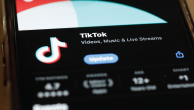Much of what drives replacement is the sense that what one is getting in the new form is somehow better than what one got previously-either in the format, function or content itself. Tablet news users were asked to give overall assessments of their news experience on these devices compared with before they had their tablet. They were asked both about the ease of learning on their tablet and about their enjoyment getting news. For both, most tablet news users said there wasn’t much difference (60% said the enjoyment was about the same and 57% said that of the ease of learning). But of those who did see a difference, positive assessments far outweighed negative. Nearly ten times as many tablet news users said they find it easier to learn new things (38%) than find it more difficult (4%). Similarly, 31% said they enjoy the news more on the tablet than from other platforms, while just 8% enjoy it less.

The select Web survey of 300 tablets users’ news consumption habits during the previous seven days delved even more deeply into this issue of enjoyment. Among those who had read longer articles and analysis in the past week, roughly half said they enjoyed doing so more on their tablet than in a printed publication (49%) or on a laptop or desktop computer (51%). Just 16% preferred print over the tablet for longer articles and 15% preferred desktop/laptop reading over the tablet.

What is it that leads to this greater enjoyment and preference? The main survey group of tablet news users (the group of 894) was asked to say in their own words what they felt the tablet is especially good at and bad at when it comes to delivering news. What stood out first was how many more people had something positive to say than something negative. Nearly everyone, 82%, volunteered a positive trait while less than half, 42%, offered a negative one.
When it came to what people like about the tablet, better access to news content was named most often (about a quarter of respondents mentioned access to news). “A lot of different sources in one place,” one respondent wrote. I can “pick it up and get access to websites quickly,” said another.
The next most mentioned trait was general ease of use (19%), from the tablet’s portability to its speed and size. “I would use it in places I would not use my laptop,” wrote one individual. The ability to track breaking news, headlines or specific areas of interest was named nearly as often (18%).
Overall convenience, such as one respondent’s remark that it is “always on,” ranked fourth at 11%.
On the negative side, there were fewer responses overall. Of those who did answer, again and again they cited the lack of Adobe Flash technology (which results in users being unable to view a good deal of video and graphics). Fully 21% named this specific missing component in statements like, “The iPad is not adobe compatible. I can’t get video on all news issues all the time.” These complaints are at least beginning to be addressed. In September 2011 Adobe released new Flash software that allows mobile Apple devices to play some Flash-based content.
A good deal of these early users cited problems directly tied to news: 10% named limited news or content options as the greatest downside, especially the tendency toward headline summaries rather than in-depth reports and the difficulty in finding the news they are looking for. Usability problems such as too small of a screen, that some apps “take a long time refreshing . . . and I just end up closing it down,” and the difficulty in multi-tasking accounted for 9% of responses.




